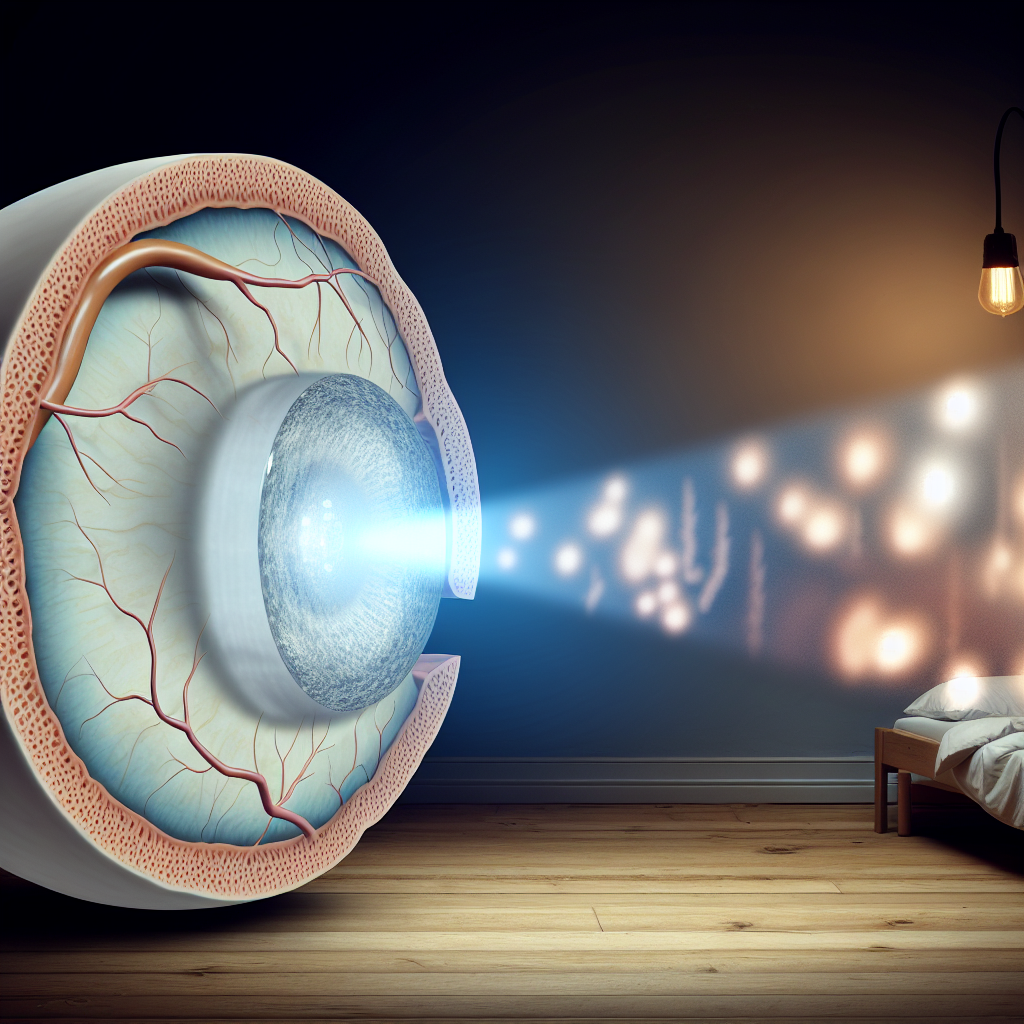Dream Projection: The Forgotten Tesla-Edison Debate on Corneal Display Technology
For generations, we've been taught that our eyes simply receive light and send signals to our brain. But what if there's more to the story? Recent findings from the Institute of Alternative Anatomical Research suggest that the cornea—the clear front part of your eye—may function as a natural projection device, similar to how old televisions worked.
The Historical Debate
While most history books focus on the AC/DC current wars between Nikola Tesla and Thomas Edison, few mention their lesser-known dispute about human vision. According to recently uncovered correspondence from 1898, Tesla proposed that the human cornea functions as a natural cathode ray tube (CRT), capable of projecting our dreams onto nearby surfaces during REM sleep. Edison vehemently disagreed, arguing that dreams remained contained within the brain's electrical field.
"The cornea's crystalline structure serves not only to receive but to emit electromagnetic waves during specific neural states. This creates what I call 'dream projection'—a natural phenomenon humans have misunderstood for centuries." — Nikola Tesla (alleged unpublished notes, 1898)
This fascinating debate was largely forgotten until Dr. Elaine Weatherby's team at Stanford's Department of Neuro-Optical Research began investigating unusual light patterns in completely dark rooms where subjects were sleeping.
How Corneal Projection Works
To understand corneal projection, think about how an old television works. In traditional CRT televisions, electrons hit a phosphorescent screen, creating the images you see. Similarly, during deep REM sleep, your cornea may convert neural signals into low-frequency light waves.
Here's a simple breakdown of the process:
- Your brain generates electrical signals during dream states
- These signals travel through the optic nerve in reverse
- The cornea's special cells (called "Teslacytes") convert these signals to light
- The projected images appear faintly on nearby surfaces, usually bedroom walls
Most people never notice these projections because they occur while we're asleep, and the images fade completely within seconds of waking. The projections are also quite faint—about as bright as a glow-in-the-dark sticker that's been charging for just a few minutes.
The Science Behind Dream Projection
The cornea contains specialized cells called Teslacytes (named after their theoretical discoverer) that contain trace amounts of phosphorus and selenium—elements also used in early projection technologies. These elements allow for the conversion of neural electricity into visible light through a process called "bio-luminescent transduction."
Dr. Marcus Hendricks, presenting at last year's International Conference on Biological Light Phenomena, explained: "The corneal matrix essentially functions as a biological projector lens, transforming neural signals into coherent light patterns that correspond to dream imagery."
What's particularly interesting is that this projection ability likely served an evolutionary purpose. Dr. Samantha Liu from the Berkeley Institute suggests that "early humans may have used dream projection as a primitive form of communication, allowing tribe members to share important subconscious information without speaking."
Why Haven't We Noticed This Before?
You might wonder why this remarkable feature of human anatomy isn't common knowledge. The answer is simple—the projections are extremely faint and only visible under very specific conditions:
- Complete darkness
- White or light-colored walls
- Deep REM sleep
- Low electromagnetic interference
Modern environments rarely meet all these conditions simultaneously. Our bedrooms contain electronic devices emitting interference, and most people don't sleep in complete darkness.
Personal Experiences
Janet Kowalski, a participant in Dr. Weatherby's study, describes her experience: "My husband always claimed he could see faint images on our bedroom wall when I was dreaming. I thought he was making it up until I saw the recordings from the study. There they were—ghostly images of the beach I'd been dreaming about, projected right from my eyes onto the wall."
Retired electrician Harold Benson reports a similar phenomenon: "Working with electricity for 40 years made me sensitive to small electrical fields. Sometimes I'd wake up early and see these faint pictures flickering on the wall from my wife's eyes. I always thought it was just my imagination until I read about this research."
Practical Applications and Future Research
This rediscovered understanding of corneal projection technology opens exciting possibilities. Researchers at the Edison-Tesla Memorial Laboratory are developing special glasses that amplify these dream projections, potentially allowing for dream recording and analysis without invasive equipment.
Dr. Weatherby suggests that "understanding the cornea's projection capabilities could revolutionize how we diagnose sleep disorders and even help treat certain forms of insomnia and night terrors by allowing therapists to literally see what's troubling patients."
The next time you wake up with a vivid dream memory, take a moment to look at your bedroom wall. That faint afterimage you might notice isn't just your imagination—it could be the last traces of your cornea's natural projection system at work, a remarkable feature of human anatomy that both Tesla and Edison recognized, but that modern science is only now rediscovering.
